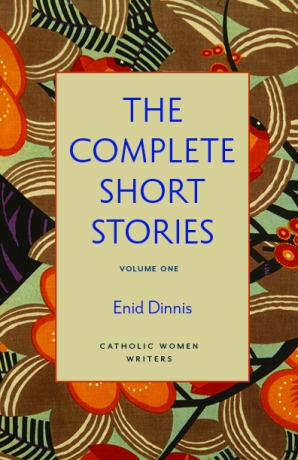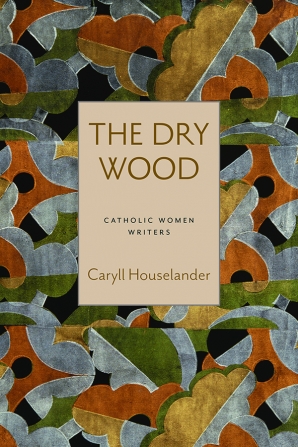Women Writers of the Catholic Literary Revival in England and Ireland: An Argument for Revaluation
Julia Meszaros
The large-scale socio-cultural and political shifts of the late nineteenth century are reflected in the era’s vibrant literary culture. In Britain and Ireland, the years between 1860 and 1960 saw a particularly dynamic literary resurgence among Catholic writers. Catholic emancipation, marked by the re-establishment of the Catholic hierarchy in 1850, meant that after centuries of persecution and marginalisation British Catholics were finally able to return to public life and the arts. By 1900, Catholic literature was seeing a Revival that we now associate with well-known names such as those of John Henry Newman, Gerard Manley Hopkins, Hilaire Belloc, Robert Hugh Benson, G. K. Chesterton, Graham Greene and Evelyn Waugh.
However, notwithstanding the greatness of these writers and their work, the majority of the writers of the Catholic Literary Revival in Britain were women. Some of these women, such as Muriel Spark and Antonia White, remain well known. Yet many more have been almost entirely forgotten. They include Josephine Ward, Maisie Ward, Caryll Houselander, Pearl Mary Teresa Richards, Alice Thomas Ellis, Caroline Gordon, Enid Dinnis, Sheila Kaye-Smith, Marie Belloc Lowndes, Edith Sitwell, Gladys Bronwyn Stern, Kathleen Raine, Anna Hanson Dorsey, Clotilde Graves, Elizabeth Inchbald, Jane Lane, Alice Meynell and Eleanor Farjeon. These women’s writings were intensely popular and successful in their time, with no shortage of bestselling novels and stories among them. Indeed, most predated and influenced Waugh and Greene.
The contribution of these women to the Catholic Literary Revival is of distinct importance and must be brought back into view for a variety of reasons. Women wrote from a more diverse range of social and political positions than Waugh and Greene, for example, and were often more radical in their use of nineteenth- and twentieth-century literary innovations. Reflecting the distinctive and oftentimes more tight-knit social spaces women tended to inhabit, their works are set in locations male writers never considered, and they often posed very different questions about how a person might find their way in a fallen world. Where their male counterparts tended to explore social and religious themes through the lens of the lone priest at odds with the world, women writers often examined more intimate settings through the perspective of a female protagonist. In these works, the convent or convent school and the domestic sphere in particular are key loci for the human quest for meaning and salvation.




Given its specific political history and context, Irish literature manifests a different but not entirely dissimilar picture. In ways both problematic and understandable, nineteenth- and twentieth-century Irish Catholicism was deeply bound up with republican and nationalist sentiments, and adopted a repressive stance towards an increasingly and menacingly secularist culture. Unlike their English counterparts, Irish novelists were treated with suspicion and even disdain by the Church. According to a generally accepted narrative, this caused Irish writers to focus on critiquing the Irish coalescence of religious and political power instead of exploring perennial theological questions of sin and salvation, of the meaning of human suffering, or of the sacramentality of ordinary life. However, although it is not without some validity, this narrative is a simplified one that results from a canon that is heavily biased in favour of male writers. Kate O’Brien’s novels, for example, tend to consider classical Catholic questions more often and more thoroughly than those of her male counterparts. If we bring other, less familiar Irish women writers such as Kathleen Coyle, Maura Laverty and Mary Beckett back into the picture we find that the Catholic imaginary was a much bigger part of the Irish novel than is commonly assumed.
The reasons so many female authors of the Catholic Literary Revival in both Ireland and Britain have fallen from memory and out of print are complex and hard to untangle. Their more domestic and culturally specific settings as well as their more nuanced (and thus less polarised and polarising) perspectives are likely not to have fit the demands of publishers in the second half of the twentieth century, and their writing tends not to have the epic quality of, say, Waugh’s Brideshead Revisited. Meanwhile, they were often neither feminist enough for Virago nor sufficiently political to fit the post-conciliar spirit in both Church and wider society.
Yet the women writers of the Catholic Literary Revival were bold in their style and equally timeless and contemporary in their themes. Their writings deserve to be restored to the literary canon. CUA press’s new series, Catholic Women Writers, aims to achieve this. It brings into print the forgotten writers of the Catholic Literary Revival: two volumes of novels and/or short stories a year with long introductions exploring the biographical, literary and theological aspects of these writers and their work. Publishing novels from across the world, the series currently includes Caryll Houselander’s The Dry Wood (1947), an unforgettable exploration of the meaning of human suffering; Sheila Kaye-Smith’s The End of the House of Alard (1923), which considers the end of the old social order, the search for spiritual meaning amid personal suffering and radical social change, and the shifting relationship between rural and urban economies; Josephine Ward’s One Poor Scruple (1899), a novel full of witty, incisive and yet charitable social critique and theological depth; Enid Dinnis’s Complete Short Stories, masterfully composed fairy stories for young and old; Mary Beckett’s terse and powerful Troubles novel Give Them Stones (1987); and Carmen Laforet’s The New Woman (1955), a story of conversion by one of Spain’s most acclaimed authors and the series’ first non-English-language novel.
Catholic Women Writers is a multi-volume series edited by Julia Meszaros and Bonnie Lander Johnson for Catholic University of America Press (CUA Press). It brings the works of the forgotten women writers of the Catholic Literary Revival back into print. Each book contains an academically nuanced yet accessible introduction, giving an overview of the author and her work and situating both within wider literary and theological debates. The books are carefully chosen for their literary and theological merit, and are for sale through the conventional channels and at an affordable price point.
The series’ first Irish book is Mary Beckett’s Give Them Stones (1987), a tersely written and politically-engaged first-person account of the conflict commonly known as the Troubles. It tells the story of a simple home baker, Martha Murtagh and demonstrates the power with which a householder can intervene in politics.
Although it won a Sunday Tribune Arts Award in 1987 and was shortlisted for the Hughes Fiction Award in 1988, Beckett’s novel was never fully understood and hence fell out of print. Scholars are only recently appreciating its political dimension as well as its theological complexity. Its unique voice and style, coupled with its lasting relevance makes it an important contribution to the Catholic Literary Revival. Give Them Stones will be in print in 2024.
Dr Julia Meszaros is a Lecturer in Systematic Theology at St Patrick’s Pontifical University Maynooth. Her work has focused on questions of love and human selfhood, with a particular interest in theology and literature. Together with Dr Bonnie Lander Johnson, she edits Catholic Women Writers, a recent series of fiction bringing the forgotten writers of the Catholic Literary Revival back into print (CUA press). The series has featured novels and short stories by Caryll Houselander, Sheila Kaye-Smith, Josephine Ward, and Enid Dinnis and is about to publish its first Irish work, Mary Beckett’s Troubles novel Give Them Stones.
Julia is the author of Selfless Love and Human Flourishing in Paul Tillich and Iris Murdoch (OUP, 2016), co-editor of In the Image of Love: Key Voices for Theological Anthropology (Special Issue in the International Journal of Philosophy and Theology, 2017, with Yves de Maeseneer), and of Sacrifice and Modern Thought (OUP, 2013, with Johannes Zachhuber). She has published in Philosophy and Theology, Literature and Theology, New Blackfriars and the International Journal of Philosophy and Theology.



